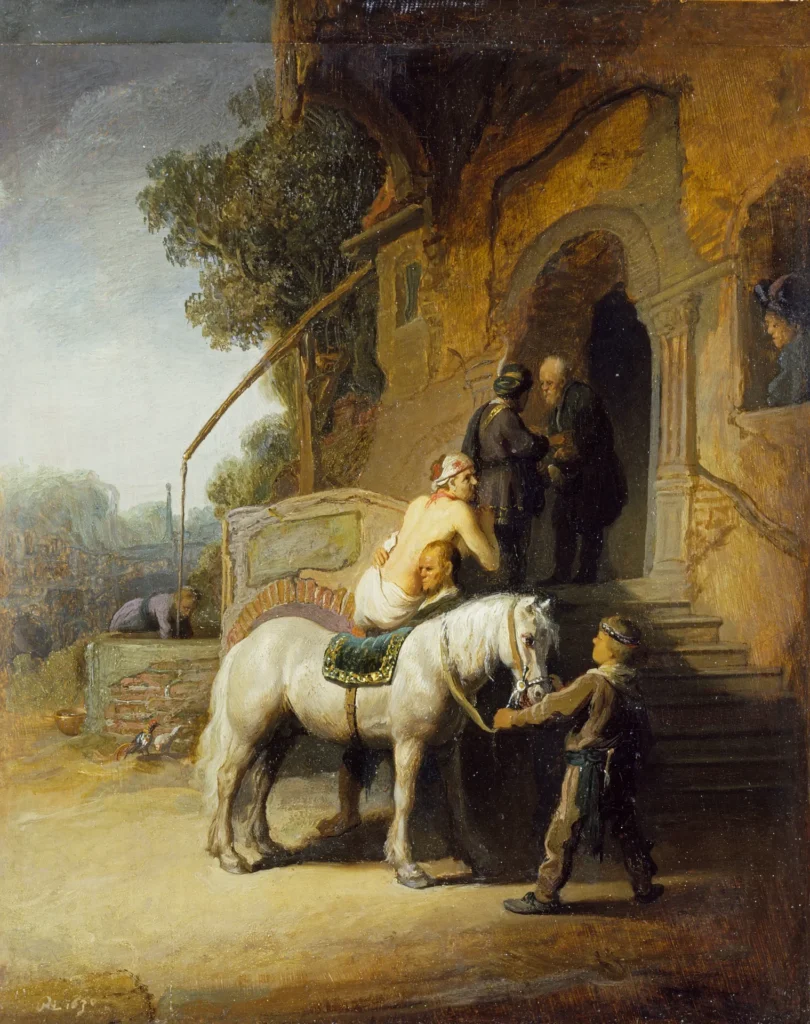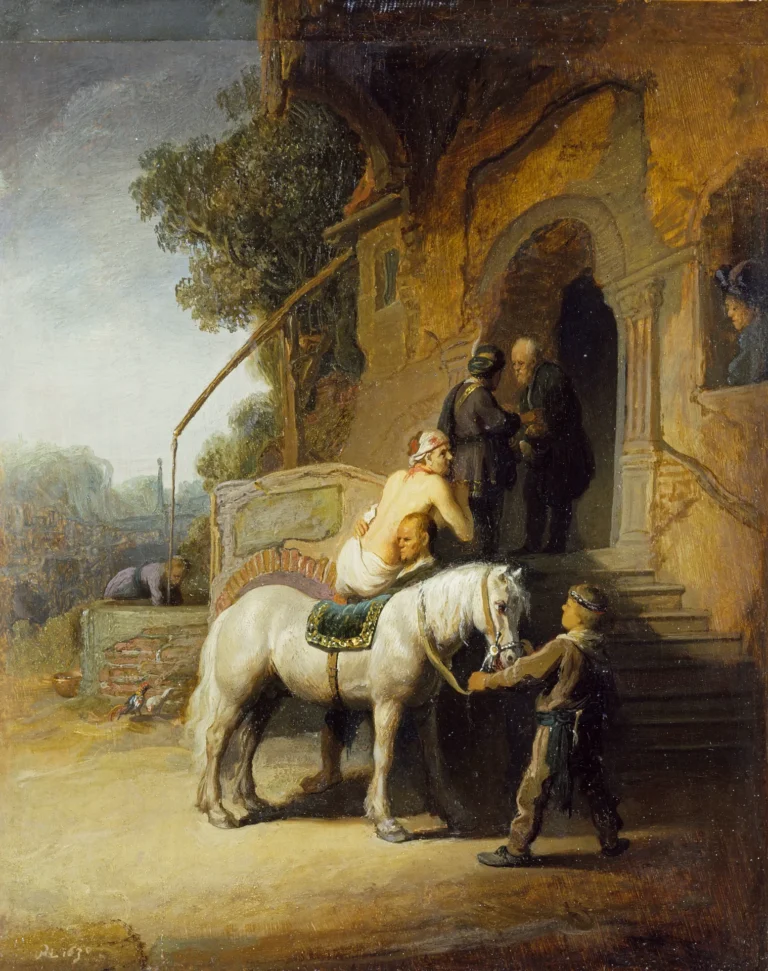The Good Samaritan (1633)
Rembrandt's The Good Samaritan is a remarkable etching that captures the moment of mercy as the Good Samaritan aids a wounded man, illuminating themes of compassion and humanity. The artwork intricately combines everyday life with a profound biblical message, showcasing Rembrandt’s exceptional use of light and shadow. Not only does it serve as a visual retelling of the Gospel parable, but it also invites deeper contemplation about the nature of altruism and the spiritual dimensions of kindness, positioning it as a significant piece in Dutch art history.
Year 1633
About the Artwork
Created in 1633, The Good Samaritan reflects Rembrandt's deep engagement with biblical themes and human emotion. The scene unfolds with the Samaritan aiding the wounded man, a moment rife with significance and compassion. The portrayal of the inn, despite its dilapidated state, symbolizes refuge and salvation, while the ongoing activities of life surrounding the scene create a stark contrast between the ordinary and the extraordinary. It embodies a narrative that transcends time, resonating with the eternal values of mercy and humanity. Rembrandt’s decision to depict the Samaritan from behind, allowing viewers to project their own interpretations of altruism, adds to the painting's depth. The work stands as a testament to both the beauty of human kindness and the complexities of the human condition.
Did You Know
In Rembrandt’s depiction, the Good Samaritan’s face is intentionally obscured, symbolizing the selfless, anonymous nature of true charity as instructed in biblical teachings.
The artwork captures the 17th-century Dutch societal context where themes of mercy and community were deeply valued, reflecting a cultural engagement with spiritual narratives.
Critics, including Goethe, have viewed the etching as a representation of both hope and despair in human existence, showcasing the dual nature of mercy amidst life’s struggles.










